Anthony Calfo teaches a Propagation Workshop
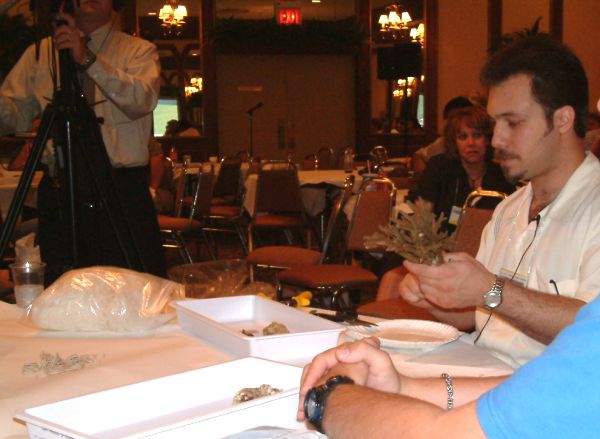
After lunch on Sunday, Anthony gave those in attendance the opportunity for some hands-on training.
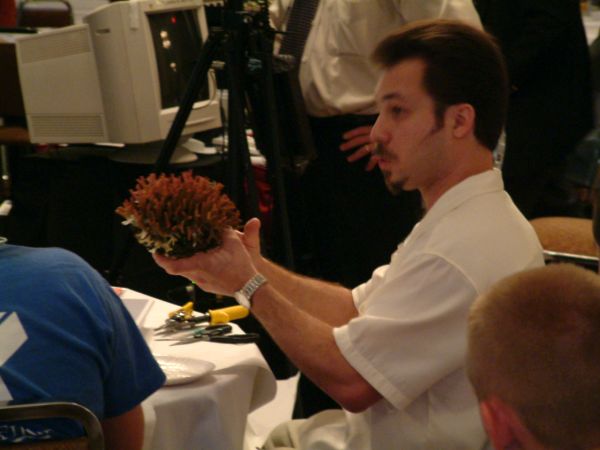
He explained how it is best to insert your shears near the base of the would-be frag, get a good bite, then snap the piece off by twisting the tool. In this way the stress is minimized because no pressure is being put upon the polyps themselves. He encouraged others to not use their fingers to snap off pieces as it bruises the soft tissue and can cause bleached areas and/or infection to the coral. |
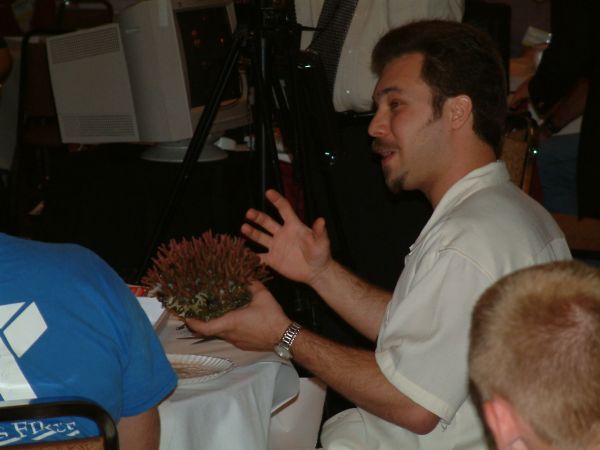 \
\
He animatedly answered questions, and did his best to give us a good overview of successful fragging of soft and hard corals. When placing new frags in your tank after cutting them from the parent colony, don't place them above the parent. Always place them at the same height or lower, so the frag doesn't have to adjust to a different intensity of lighting or flow. |
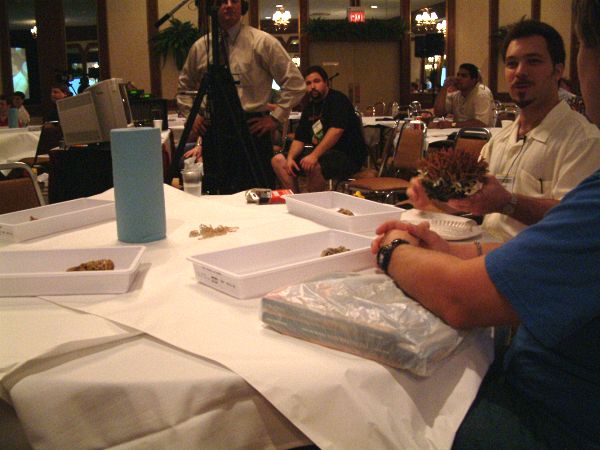
Interestingly, he was in no hurry to get these coral back under water. Having them out for up to an hour while fragging is just fine. Gluing the frags with Super Glue Gel works well, and even needs multiple applications sometimes. Within a few weeks, the coral will grow tissue over the glued area. He also recommended having several containers of tank water in your work area, to put your corals through a series of dips. This avoids putting the coral's stress-related slime into your tank. |
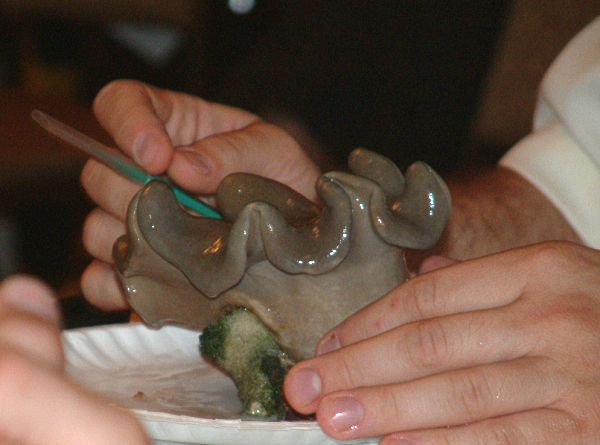
When handling corals, try to hold them by the base rock, where no live tissue is present.
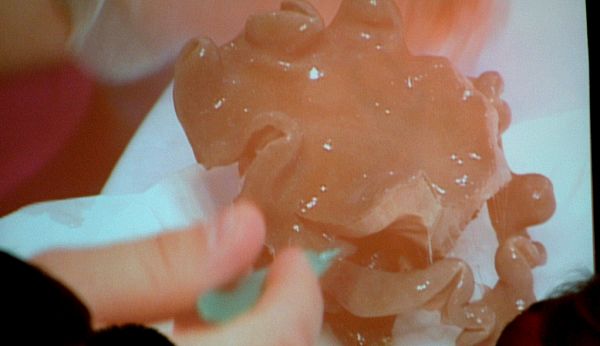
He's using a scapel-like tool to cut a full piece off this leather, creating a donut of fleshy tissue. If you look closely, you'll see the stringy material between the parent colony and the newly cut frag. The sinewy stuff streched over two feet long, so he had to cut it with his razorblade. It did slime a lot during the cutting process. |
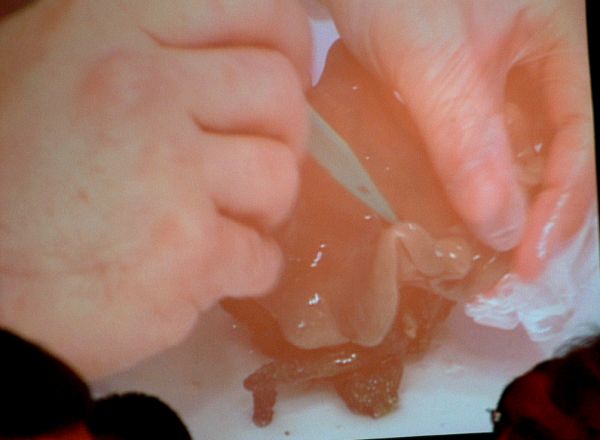
Wearing gloves when handling corals is best, for the coral as well as yourself.
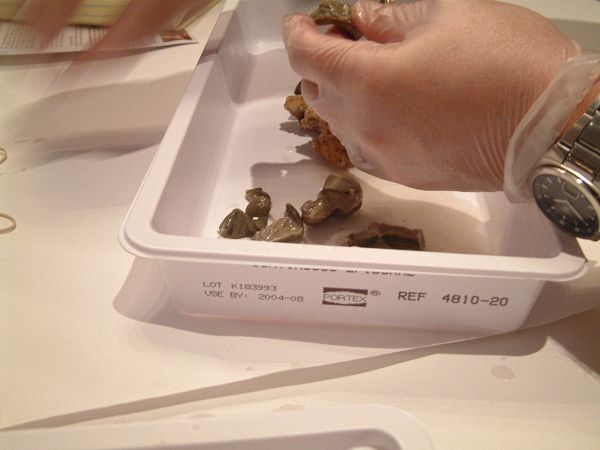
Our table cut the 'donut' into a dozen small pieces.
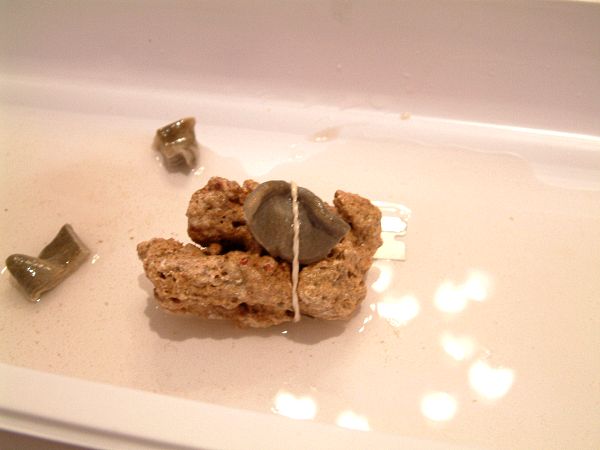
Simply banding it to the rock with a rubber band will suffice. Another method
is to stich it on with a needle
and a single strand of fishing line. In a few weeks, the leather will attach
securely. This is my new frag. :)
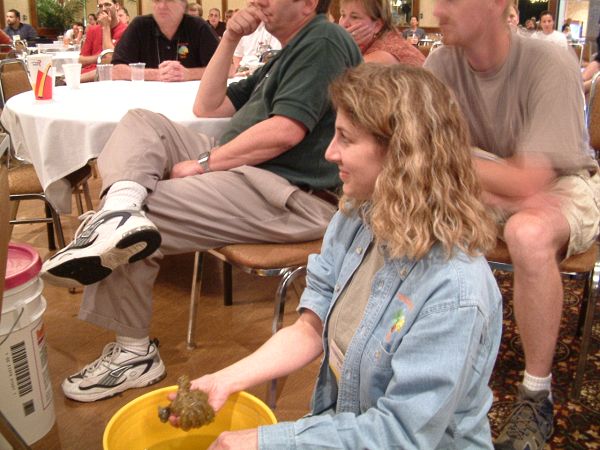
Kelly Jedlicki, VP of LMAS, kept Anthony on schedule as she 'fed' him the next coral to be fragged.
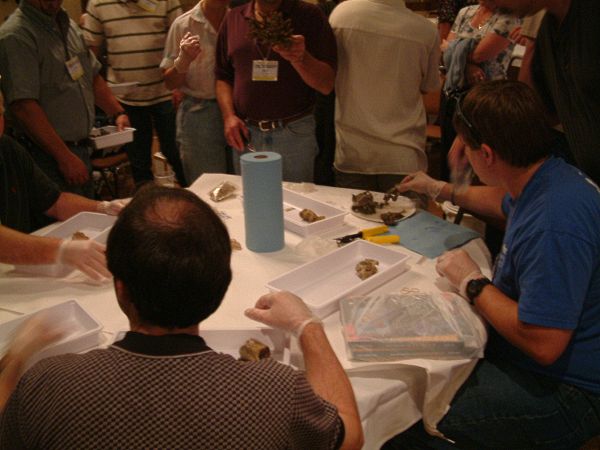
It didn't take these reefers long to chop up the soft corals, then home in on the SPS colonies.
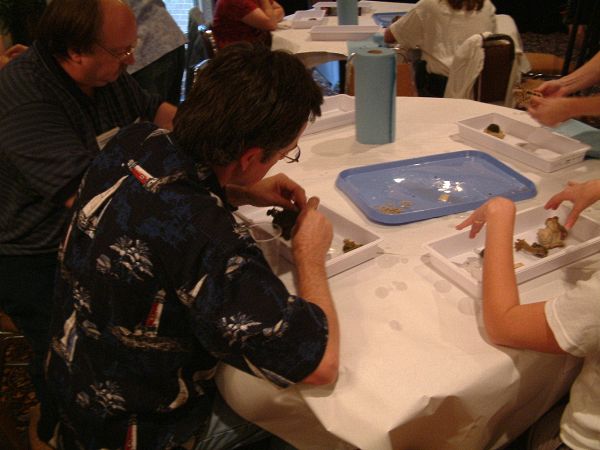
About 60 people or more got involved in this workshop.
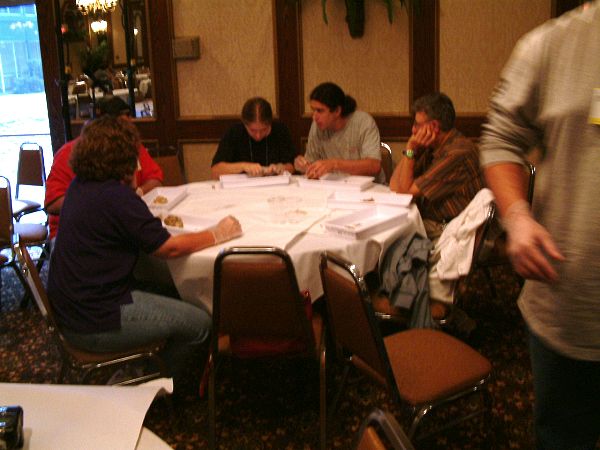
Some watched while others worked.
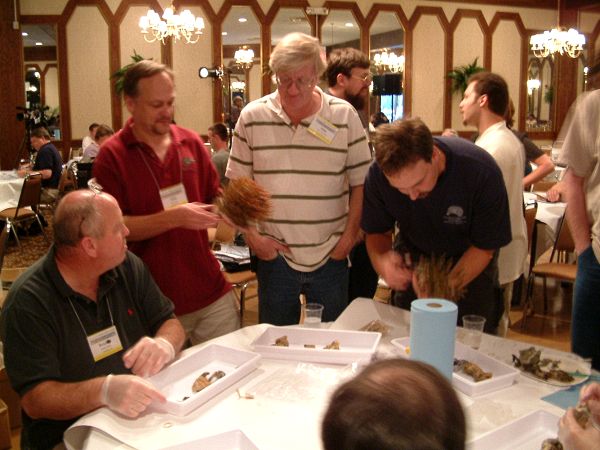
As you can see, getting stills of the frenzied reefers was tough. :)
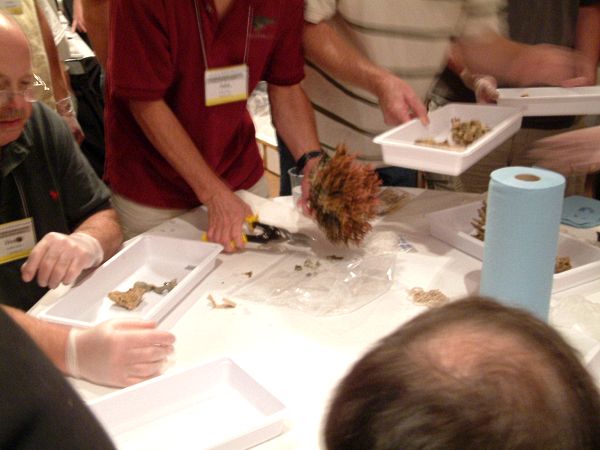
Use poulty shears, metal-cutting snips, or even a screwdriver to break away a small piece for mounting.
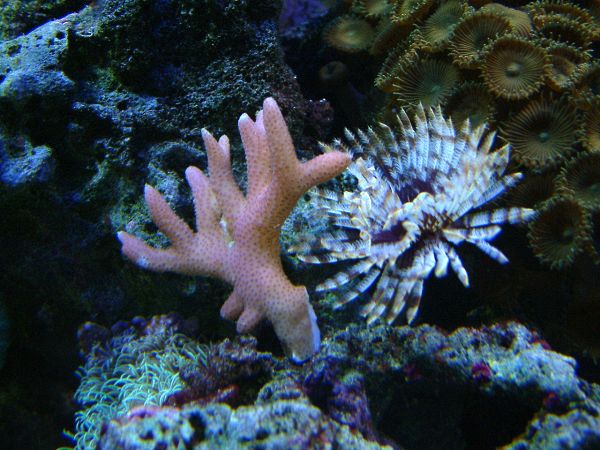
This is a piece of unmounted SPS I brought home. I believe is is Stylopora sp. aka Bird's Nest.
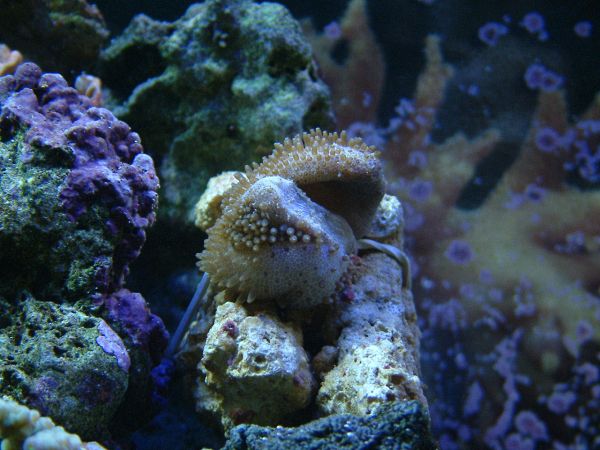
And this is the frag you saw in an earlier shot, several hours later in my tank. Toadstool Leather.